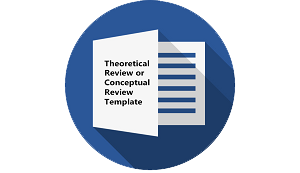PENINGKATAN KEMAMPUAN MEMAHAMI TEKS TANTANGAN MENGGUNAKAN METODE PEMBELAJARAN STAD SISWA KELAS IX SMPN 1 KARANGPLOSO
DOI:
https://doi.org/10.30957/cendekia.v12i2.520Keywords:
STAD method, understanding, text, challenge text, attainment.Abstract
Â
Â
This study aims to see the improvement to understand challenge text of the ninth graders of SMPN 1 Karangploso using STAD of cooperative learning method. This study used classroom action research assigning 31 students consisting of 14 male and 17 female students. This research implemented two cycles each of which applied planning, implementing, observing and reflection. The results showed that the ability to understand the text of the challenge increased in cycle 1. Distribution of students accomplishment are 10 (33.33%) low, 15 (48.39%) moderate, and 6 (19.35%) high. In cycle 2, students accomplishment are satisfied as no low scores are achieved. Middle scores are gained by 17 (54,83%) having a score range of 78-84, and 14 (45.16%) achieved very good score ranging from 85-100. Â Attainment of students activities during the class has also increased from 65% to 82% showing that STAD method evidently improves students attainment on challenge text.
Â
        Â
Downloads
References
Arikunto, Suharsimi. 2008. Penelitian Tindakan Kelas. Jakarta: Bumi Aksara.
Hamalik, Oemar. 2008. Kurikulum dan pembelajarannya. Jakarta: Bumi Aksara.
Handayani, Sri. 2017. Listening Teams: Strategi Pemahaman Isi Teks pada Siswa SMPN 1 Karangploso. Cendekia, (2017), 11(2):129-142.
Isjoni. 2010. Cooperative Learning Evektivitas Pembelajaran Kelompok. Bandung: Alfabeta.
Kumarawati. 2015. Penerapan Metode Pembelajaran Kooperatif Tipe Student Team Achievement Divisions (STAD) untuk Meningkatkan Kemampuan Menulis Teks Laporan Hasil Observasi Siswa Kelas X MIA 1 SMAN 1 Mendoyo. (Online) http://download.portalgaruda.org.
Marcelina. 2012. Efektivitas Metode STAD (Student Team Achievement Divisions) dalam Pembelajaran Menulis Surat Dinas. (Online) http://ejournal.upi.edu.
Mulyanto. 2011. Peningkatan Keterampilan Menulis Karangan dengan Model Pembelajaran Kooperatif Tipe STAD pada Siswa Kelas III SDN Ngargosari Tahun 2011/2012. (Online) http://digilib.uns.ac.id.
Nurhadi. 1987. Membaca Cepat dan Efektif. Bandung: Sinar Baru.
Oka, I Gusti Ngurah. 1983. Pengantar Membaca dan Pengajarannya. Malang: Surabaya: Usaha Nasional.
Paul, Richard dan Linda Elder. 2006. Critical Thinking Concepts and Tools. http://www.criticalthinking.org/files/Concepts_Tools.pdf
Schafersman, Steven D. 1991. An Introduction to Critical Thinking. http://facultycenter.ischool.syr.edu/wp-content/uploads/2012/02/Critical-Thinking.pdf
Slavin, Robert E. 2010. Cooperatif Learning. Bandung : Nusa Media.
Sudaryanto, 2012. Mengatasi Rendahnya Minat Baca di Indonesia. (Online) http://writingsdy.wordpress.com.
Sugiono. 2010. Belajar dan Pembelajaran. Kediri : UNP.
Suprijono, Agus. 2003. Cooperative Learning Teori Dan Aplikasi Paikem. Yogyakarta: Pustaka Pelajar.
Suriati, Ni Luh; Mahsun & Sudirman. 2018. Kemampuan Menggunakan Majas Perbandingan dalam Produksi Teks Eksemplum Siswa SMP Kelas IX Lombok Utara. Lingua (2018), 15(2):115-130. DOI: 10.30957/lingua.v15i2.481.
Tampubolon, S. 2014. Penelitian Tindakan Kelas sebagai Pengembangan Profesi Pendidik dan Keilmuan. Jakarta: Erlangga.
Downloads
Published
How to Cite
Issue
Section
License
Authors who publish with this journal agree to the following terms:
- Authors retain copyright and grant the journal right of first publication with the work simultaneously licensed under a Creative Commons Attribution-ShareAlike 4.0 International License that allows others to share the work with an acknowledgement of the work's authorship and initial publication in this journal.
- Authors are able to enter into separate, additional contractual arrangements for the non-exclusive distribution of the journal's published version of the work (e.g., post it to an institutional repository or publish it in a book), with an acknowledgement of its initial publication in this journal.
- Authors are permitted and encouraged to post their work online (e.g., in institutional repositories or on their website) prior to and during the submission process, as it can lead to productive exchanges, as well as earlier and greater citation of published work (See The Effect of Open Access).












